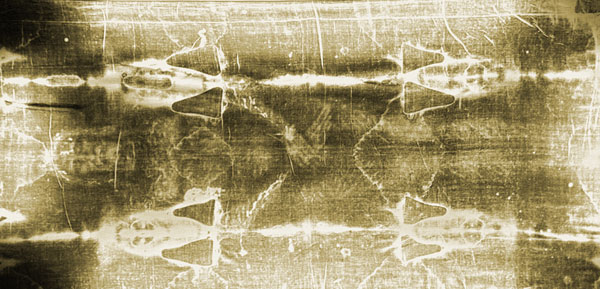
Today on the pious occasion of Easter, let us find out what the scientists have to say about the crucification of Jesus. Many experiments were conducted on the Turin Shroud using latest techniques used in space technology and all of them proved in favour of the theory, rather than against it, a phenomenon which is rare is science. Here is a collection of some interesting discoveries and facts over time…
Nails Through Wrists not Hands
In the many paintings of the crucifixion, Christ is shown nailed to the cross through the palms of his hands, but the wound markings on the Shroud suggest that the nails penetrated the wrists. A French doctor, Pierre Barbet, conducted what must have been the most macabre scientific experiment ever when he crucified the body of a deceased patient with nails through the palms of the hands, only to find that the nails tore through the hands as soon as the cross was raised.
At a second attempt Dr. Barbet hammered the nails through the wrists and found that the bony structure there could support the weight of the body. And he noticed another thing: that when a nail penetrated the wrist the thumb bent inward into the palm. The absence of thumbs from the hands of the man of the Shroud had until then been an unexplained puzzle for the students of the relic.
Negative Image on Shroud
Scientists have also tried to explain how the negative image might have become imprinted on the shroud. John’s gospel states that Joseph and Nicodemus bound Jesus’ body into the Shroud with a mixture of powdered myrhh and aloes. These spices, it has been suggested by Dr. Paul Vignon, a professor of biology, could act like the sensitized plate of a film in a camera, and a chemical reaction upon them produced by ammonia vapors rising from the body could account for the photographic effect on the linen.
 An alternative theory, which is supported by Dr. Barbet, is that the cloth is stained with a component of aloes known as aloentine which was produced by moisture given off by the body.
An alternative theory, which is supported by Dr. Barbet, is that the cloth is stained with a component of aloes known as aloentine which was produced by moisture given off by the body.
Both theories have been put to the test with a degree of success sufficient to establish the point that markings like those on the Shroud could have been caused by a chemical action upon the spices with which the Shroud and Jesus’ body were liberally covered (according to John, Nicodemus brought about “a hundred pounds’ weight” for the purpose) before being put in the tomb.
Another theory that has been proposed but which cannot be tested experimentally is that the image on the Shroud was produced by chemical action at the moment of Jesus’ resurrection, caused by a radiation of energies particular to that unique event.
Scientists from JPL do tests
As science become more sophisticated and more tests are devised in the hope of finally authenticating the Shroud or proving it a fake, the relic continues to baffle those who hope to discredit it. At a conference on the Shroud held in the United States in March, 1977, some recent developments were reported. Physicists from the Jet Propulsion Laboratory in Pasadena, California, used the computer techniques employed to enhance or magnify photographs sent back from Mars on a photograph of the Shroud, and they made two significant discoveries.
First, the lack of what they call “linear directionality” in the shading of the image indicates that it was not painted on the fabric; and second, the enhancement technique enabled them to produce a three-dimensional version of the images on the Shroud, and it was found that the intensity of the image varied according to the distance the sheet would have been from the body at each point.
Pollen Analysis
Textile experts long ago confirmed that the linen of the Shroud is identical in material and weave pattern to many fabrics from the eastern Mediterranean that have been reliably dated from the 1st to the 3rd centuries. Now a Swiss professor named Max Frei has come up with more evidence that supports the tradition that the Shroud was taken from Jerusalem to Constantinople and then brought to Europe at the time of the Crusades.
Frei is a pollen analysis expert. Pollen, which does not deteriorate with time, indicates where things have been, and Frei has discovered that some of the pollen on the Shroud is identical with that from 2000-year-old sediments from Lake Galilee, and that other pollen traces show that the Shroud moved through Palestine, Asia Minor, and Savoy.
No Carbon Dating Yet
Up to now the custodians of the Shroud have refused to sacrifice a portion of it for a carbon dating test, which could determine its age to within 100 years. But recently a Chicago micro analyst, Dr. Walter McCrone, has improved carbon dating technique so that now only half a square inch, instead of two square feet, of the material need be destroyed for the test. Even so, it is doubtful whether even this small amount will be made available for the test.
If it is, and if the Shroud is proved to be 2000 years old, then the very least that could be said for it is that its association with the Jesus of the gospels and of the Christian faith will not have been disproved. Yet the mystery of the Shroud will remain, as will the mystery of its supposed one-time occupant, the most loved and revered as well as most enigmatic and elusive of historical figures.
Last but not least, irrespective of what science says, faith is the highest power and all religions, sects and creeds say so.